Outstanding restoration work.
New Zealander Peter Jackson has made some of the highest grossing movies in history. In 2018 he set his energies to celebrating the centenary of the end of World War I by restoring old film from the conflict. He rid the images of the grain, tramline scratches and dust blobs . and adjusted the playback speed to get rid of the jerkiness. Film of that era was shot at a hand cranked 12fps against the 24fps used in the cinema, so everything looks speeded up unless you interpolate frames to adjust the framing rate. Finally, and best of all, he colorized the results to add interest and authenticity. The sole narrative in the 90 minute documentary is from voiceovers of period writings of the soldiers in the conflict, with the moving images supplemented with the words and sounds appropriate to the time. Amazon has the DVD, titled ‘They Shall not Grow Old’, but be sure that your DVD player is multi-region as the disc is formatted for UK players.
In 1914 the masses could still be suckered into fighting and dying for ‘King and Country’ and King and Country ensured that they did so in droves. Or maybe that should be Tsar and Country. Of the 4.8 million Allied deaths, 35% were Russian, 24% French and 15% British. The Kaiser did a better job of the slaughter, sending 3.2 million to an early grave.
Idealistic Americans were suckered in with the same appeals to patriotism and the Old Country in 1942 but by the time of Viet Nam they had cottoned on to the con perpetrated by the military industrial complex, to borrow Ike’s phrase, with many deciding to stay away. And those who did serve were cruelly rejected by their fellow Americans on their return. Interestingly, as the documentary makes clear, the surviving British soldiers were met with like indifference on their return home in 1918. War is never pretty.
Here are some images from Jackson’s landmark work:
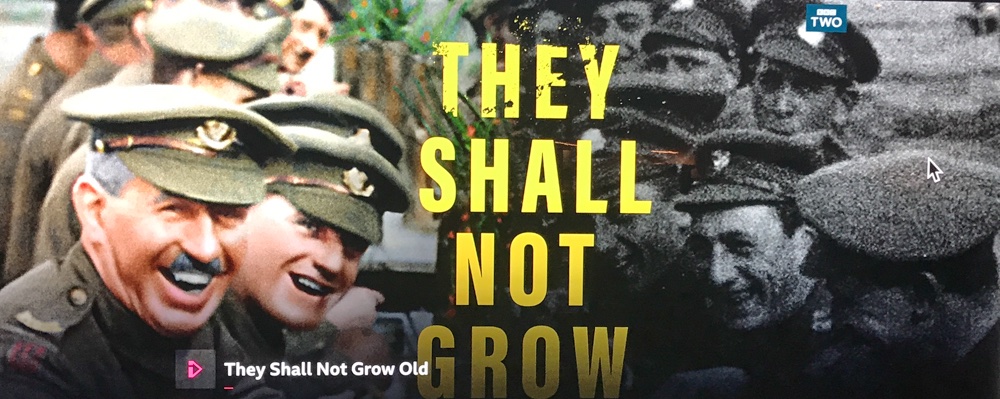
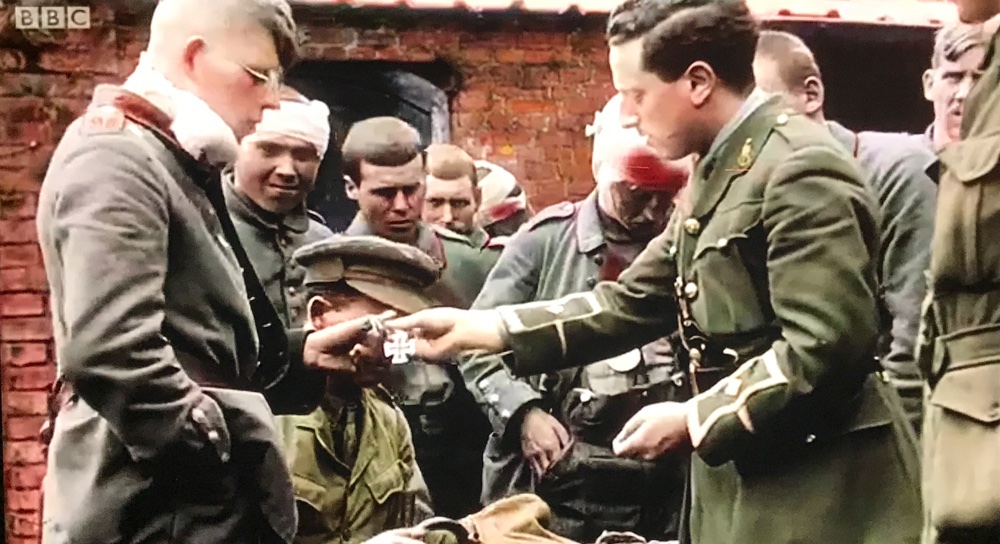
Captured German soldiers in the Allied trenches.
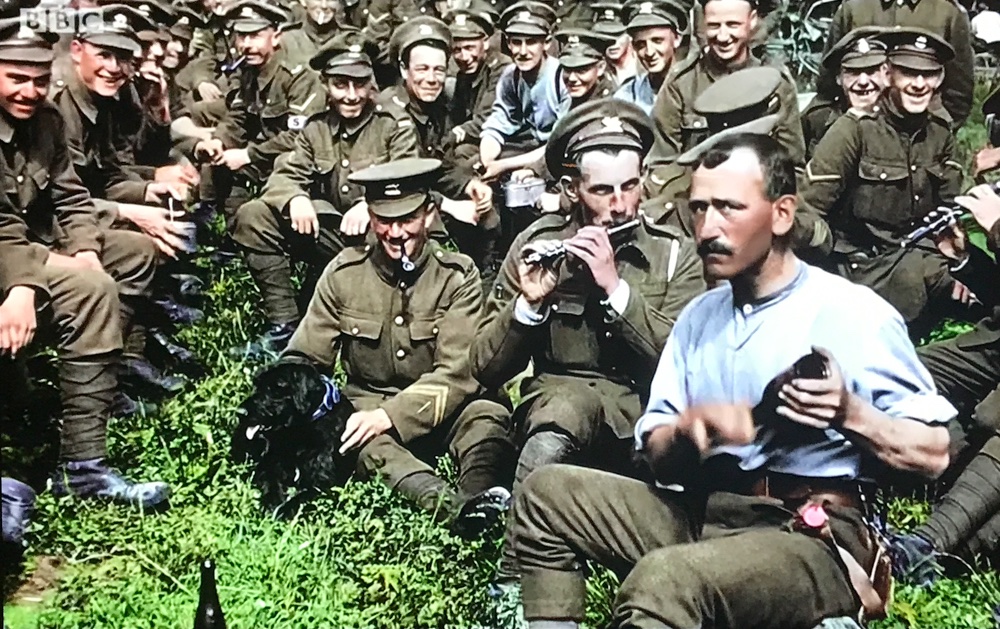
Making music between bouts of slaughter.
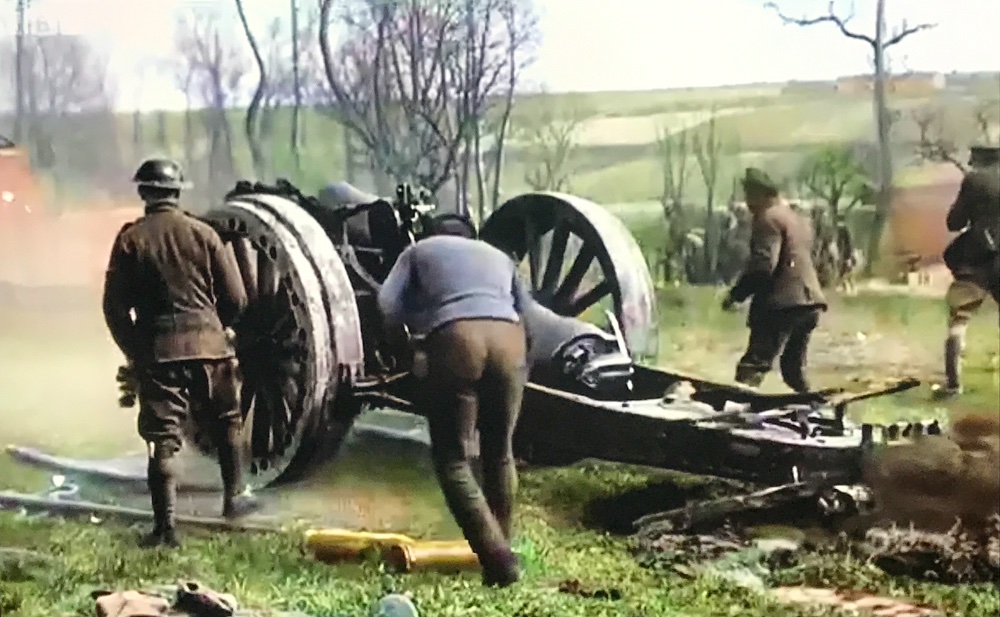
Shrapnel from the shells fired by the big guns did immense damage to men.
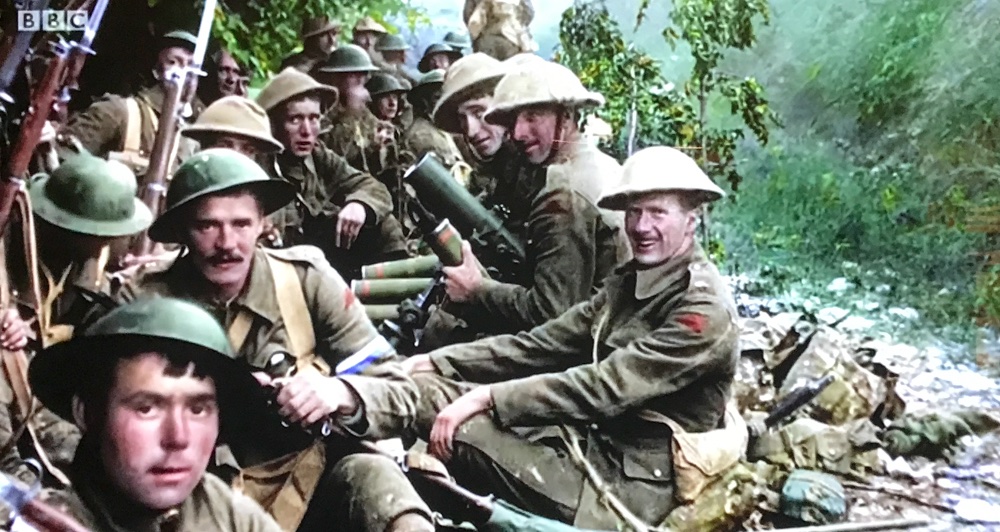
To be filmed in the trenches was a new experience.
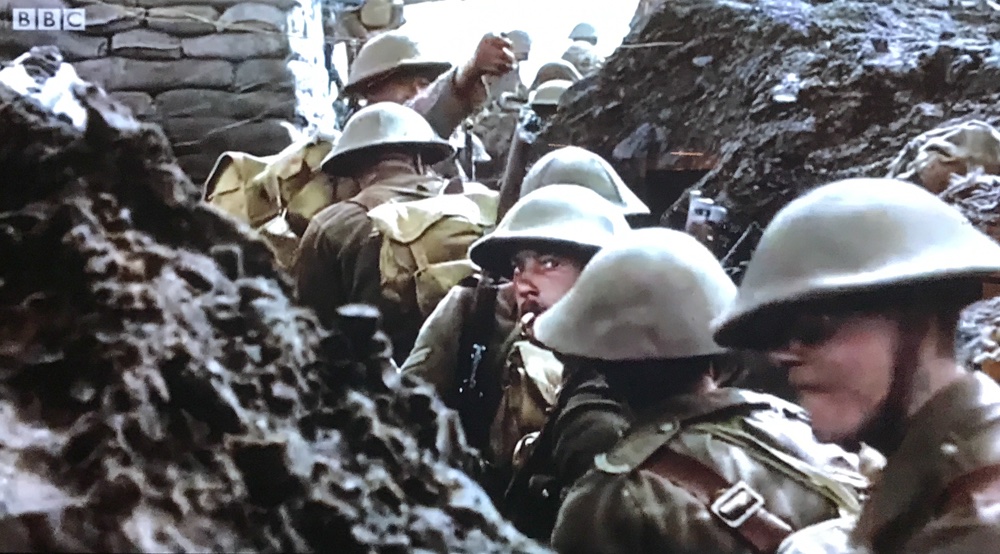
One of the most haunting images in the documentary.
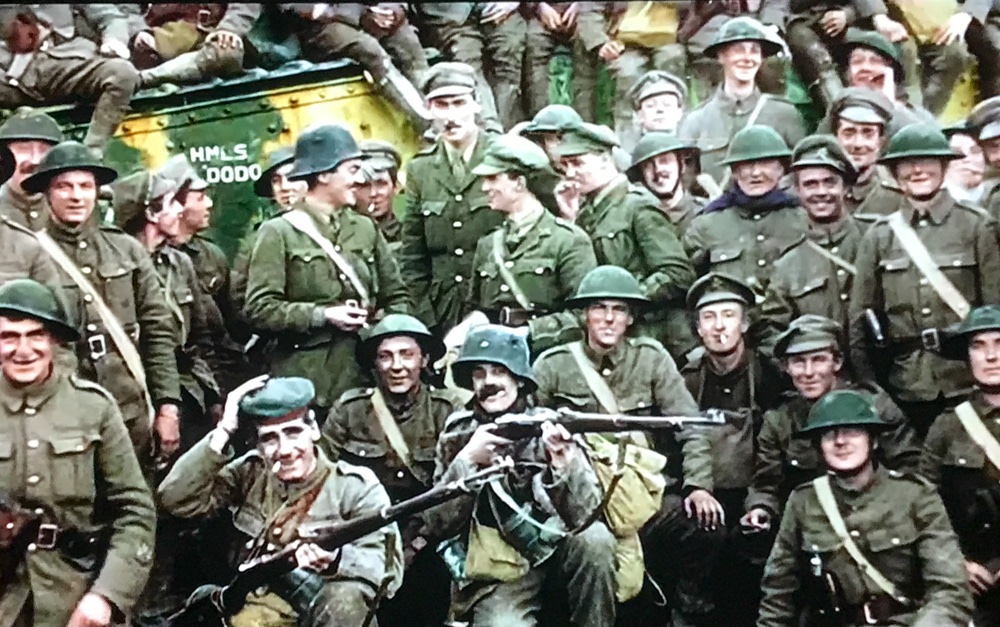
By 1918 with 8 million killed in the conflict, these smiles had faded.
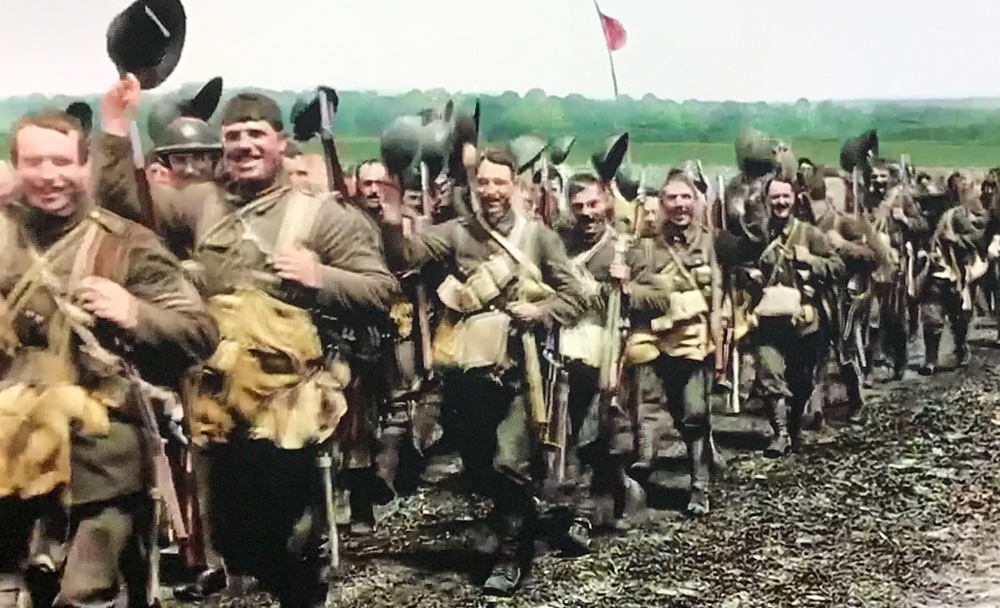
Cameraderie amongst the troops was strong.
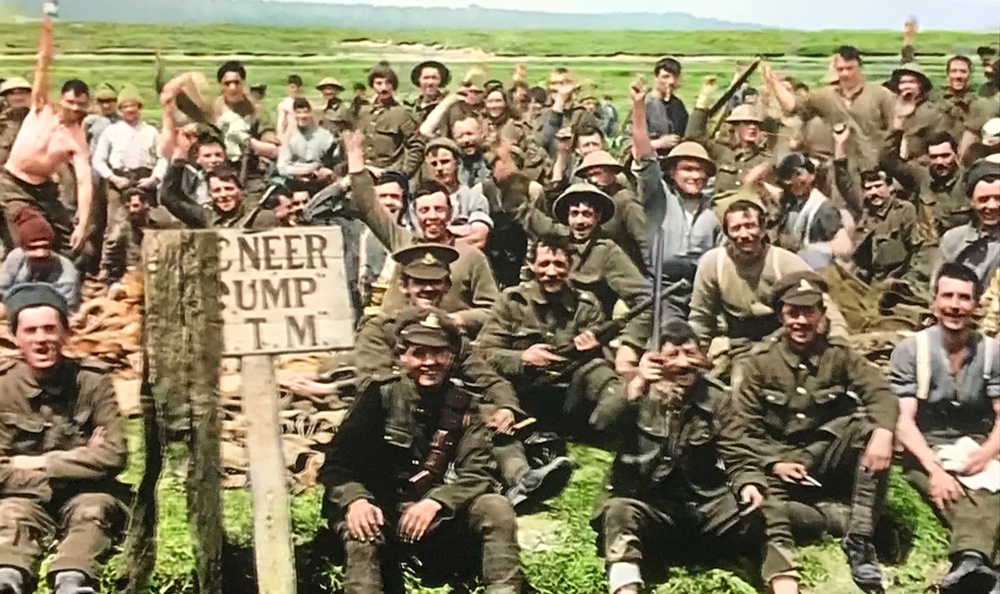
Early in the conflict.
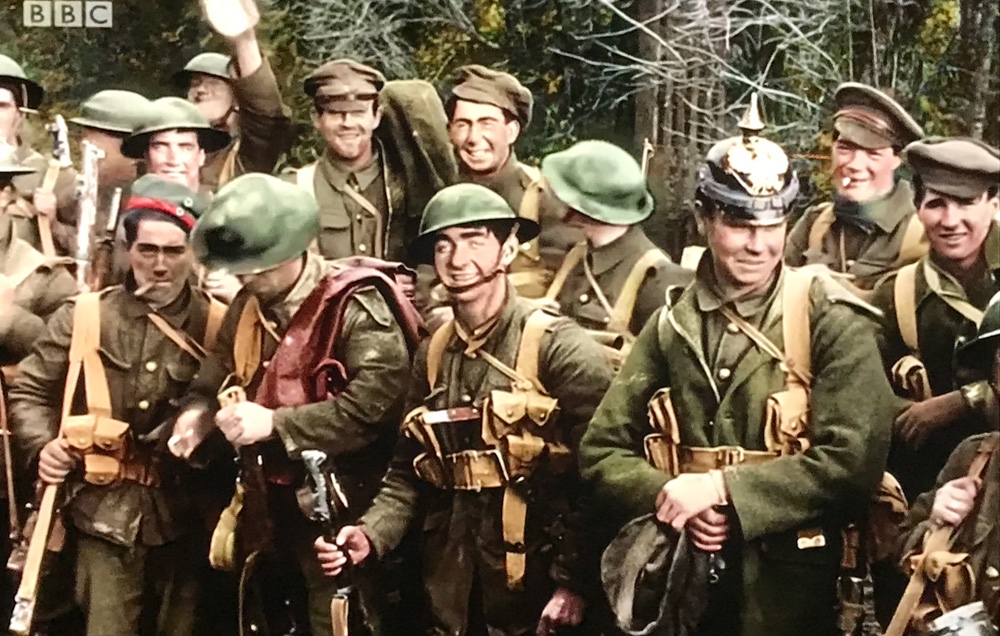
Captured ‘pickelhaube’ German helmet. The ridiculous worn by the murderous.
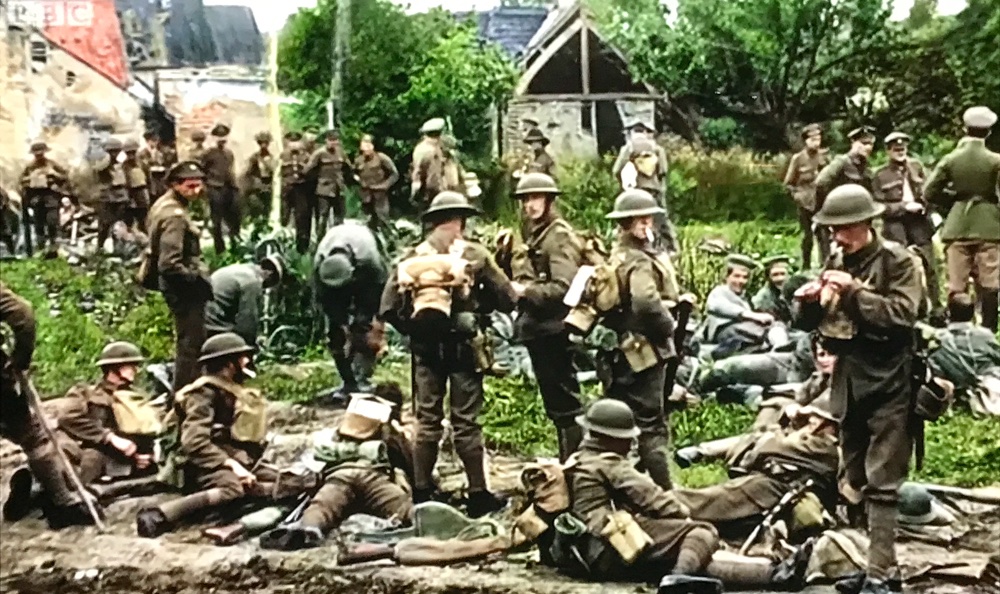
A break in the fighting.
Appropriately, the documentary commences and concludes with grainy, dirty, jerky stock footage making the transition to and from the restoration so much more effective.